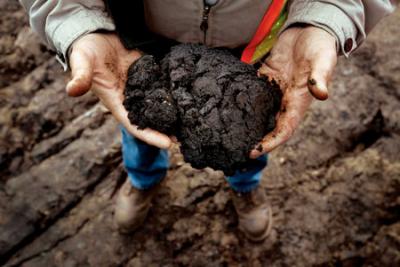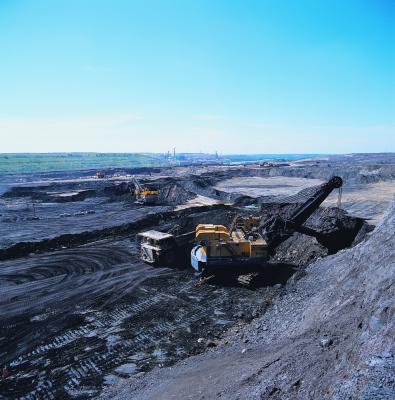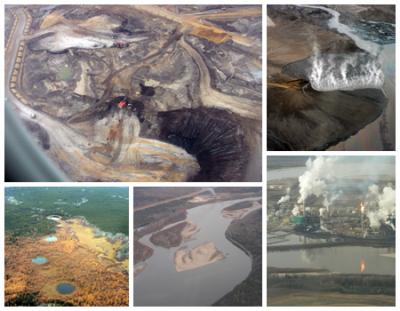Exploitation of North America’s shale and tar-sand oil reserves could increase atmospheric CO2 levels by up to 15%, a new report from WWF-UK and the major UK financial group Co-Operative Financial Services (CFS) has warned.
Extraction of the projected 1,115 billion barrels of recoverable oil from unconventional fuel sources such as Alberta’s oil sands and Colorado’s oil shale, which involve much more energy intensive procedures for extraction than traditional oil reserves, would significantly increase global risks of dangerous climate change, the report said.
Unconventional Oil: Scraping the bottom of the barrel (pdf) reported that companies including Shell, ExxonMobil and BP have announced over $CAN 125 billion worth of development in Canada’s oil sands by 2015. Increasing oil prices are also increasing interest in unconventional oil sources has been given added impetus by rising oil prices.
“The extraordinary lengths some oil and gas companies go to in attempting to make the climate-hostile fuels somewhat less so should be re-directed to bringing forward low-carbon energy,†said Ian Jones, head of Responsible Investment at Co-Operative Investments, part of the CFS group. In other words, why bother spending billions of dollars on tar-sands when you could be putting up hundreds of thousands of wind turbines with that money?
“Most oil companies have hardly begun to factor in the externalities that are currently imposed on the environment.†Duh…they don’t give a shit about anything but making money. They don’t like wind energy because the fuel always stays the same price, free. They will make about the same amount of money every year from a wind farm. The price of oil on the other hand goes up and up and up and and up and up….
These externalities include mass deforestation, such as Alberta’s Boreal forests, which lie above 140,000 square kilometres of oil sands, and are now crisscrossed with seismic lines and open-cast mines.
This region, identified as a “life support system for the planet,†is home to 11% of global terrestrial carbon sinks, themselves necessary for mitigating the climate change.
Production of oil sands is also extremely water intensive, requiring three barrels of water to produce each barrel of oil. This is threatening the ecosystem of the Athabasca river by reducing flows to dangerous levels.
Canada’s indigenous communities are also concerned with water quality in former wetlands now featuring tailings ponds up to 50 square kilometres in size which can be seen from outer space. Only 5-10% of waste water is judged sufficiently non-toxic to be returned to waterways
Risks to investors
Scraping the bottom of the barrel outlines potential risks to investors from the high capital costs of sand and shale to oil projects, looming regulatory restrictions, the likelihood of litigation, environmental liabilities from tailing ponds and restoration requirements and reliance on unproven technologies such as carbon capture and storage. Investors could end up with stranded assets,
The authors of the report themselves call for tighter regulations such as the Emissions Standards in place in California that, by prohibiting sales of fuels with high life cycle emissions, would effectively outlaw fuel extracted from tar sands and oil shale.
“Companies and investors claim to recognize the need to tackle climate change and support international efforts such as Kyoto. In oil sands we have an activity that is going against this imperative…it is time for investors to challenge this strategy†said James Leaton, WWF-UK’s senior oil and gas adviser.
“Shareholders should challenge those oil companies that fail to steward investment responsibly.†added Jones. The American public should also recognize that you don’t kick the oil habit by getting your drugs from a different source. Even if we could dig up enough tar-sands (assuming our eco-system holds out that long) to fuel our growing oil needs, we would still eventually run out. Even if it took 100 years, we would eventually run out, and have to find some other way to power our cars. The time is now to move over to an electricity based renewable energy driven energy system. Wind, solar, biomass, and geothermal should be the power sources of the future. Our earth can’t keep dealing with high carbon emissions, we must act now in order to avert economic, and ecological disaster.



One thought on “Pursuing Tar Sands And Other Non-Traditional Oil Sources Sure Sign Of Insanity”
Comments are closed.